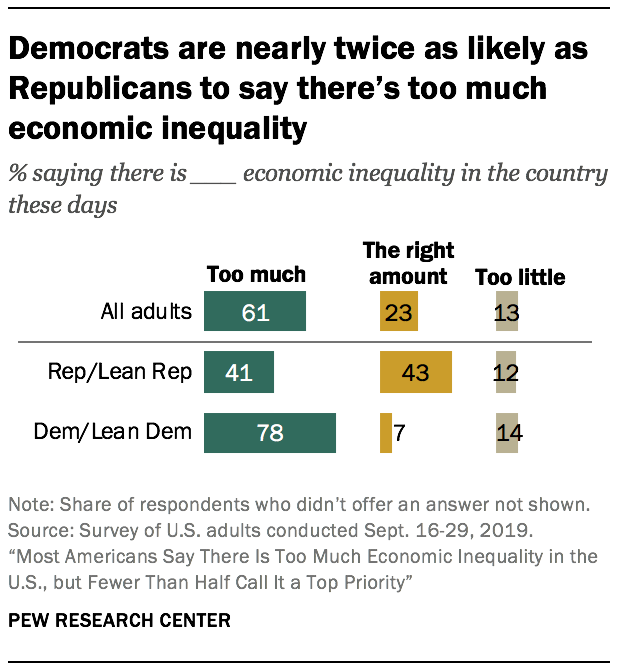The Pew report Views of Nation’s Economy Remain Positive, Sharply Divided by Partisanship (2/7/2020) provides the answer:
Currently, 81% of Republicans and Republican-leaning independents say the economy is excellent or good. These views have changed only modestly over the past two years. But between November 2016 (just before Trump’s victory in the presidential election) and March 2017 the share of Republicans with a positive view of the economy approximately doubled, from 18% to 37%. And by November 2018, they had doubled again, to 75%.
By contrast, Democrats’ assessments of economic conditions have changed only modestly since before Trump took office. Currently, 39% of Democrats and Democratic leaners say conditions are excellent or good. In November 2016, 46% had a positive impression of the economy.
The graph here is one of five in the report. The methodology section has more details and could be used in a statistics course.









